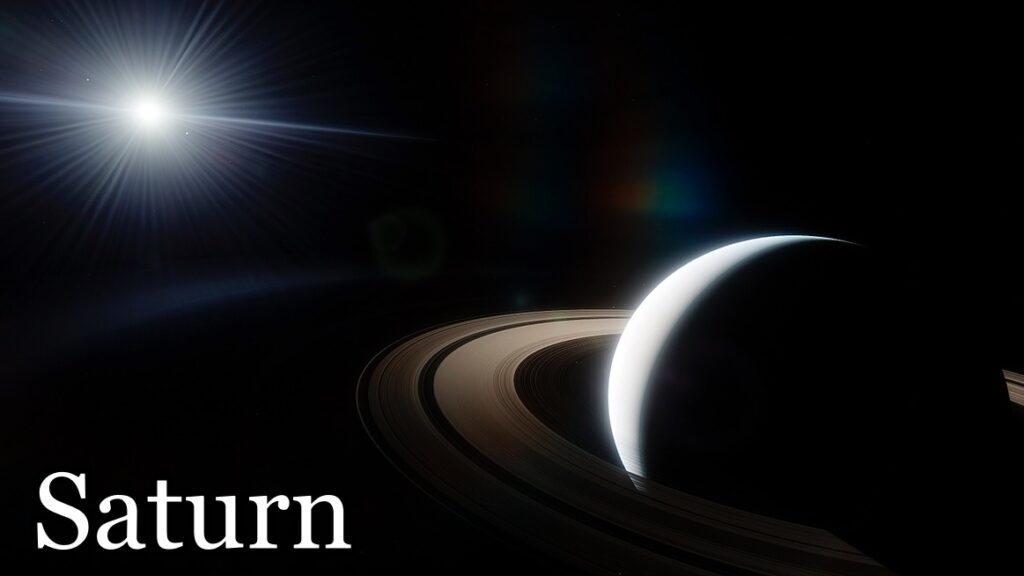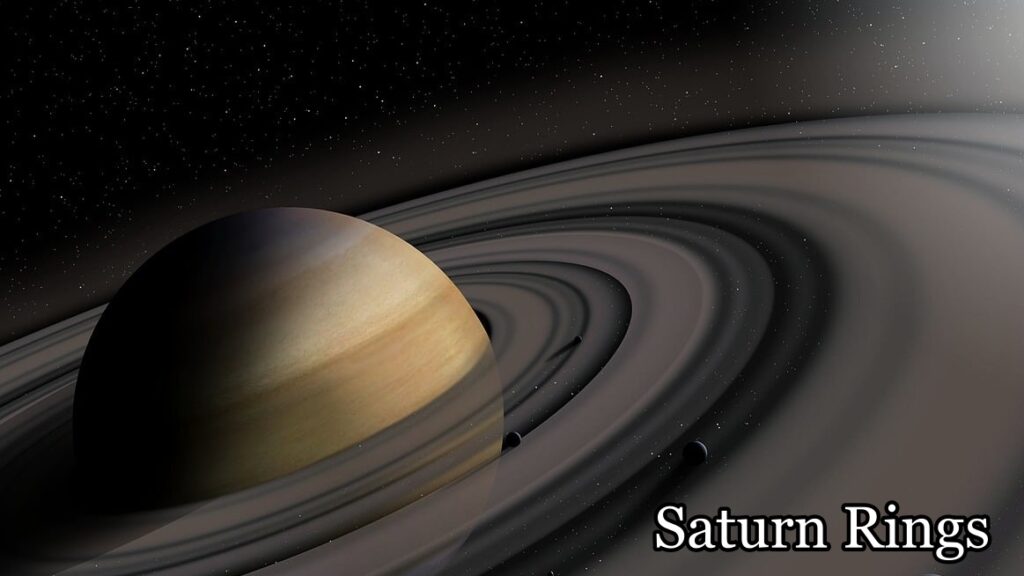Beneath the hazy orange clouds of Saturn’s moon, Titan, lies one of the Solar System’s greatest mysteries. Titan is a world unlike any other – strange, alien, yet somehow familiar.
To truly understand what’s happening on this intriguing moon, NASA is preparing to land on Titan with its groundbreaking Dragonfly mission.
What We Know About Titan
Titan is an extraordinary moon. It’s the only moon in our Solar System with a thick atmosphere, four times denser than Earth’s. Like Earth, Titan’s atmosphere is primarily made of nitrogen, but there’s one major difference: Titan’s atmosphere contains methane, not oxygen. This creates a reverse greenhouse effect, preventing heat from the Sun from reaching the surface, making Titan one of the coldest places in the solar system.
As you descend into Titan’s atmosphere, methane becomes colder and eventually liquefies, falling as rain onto a frozen surface made of ice as hard as granite rock. This results in flowing rivers, lakes, and seas of methane, making Titan the only known world, aside from Earth, with an active hydrological cycle and stable liquid on its surface.

Much like Earth, Titan boasts a variety of environments, including vast deserts with long dunes made not of sand, but granular organic material that has fallen from the sky. The origin of this material is still unknown, and it raises intriguing questions about the potential for life on Titan.
Titan’s Potential for Life
Titan also holds something incredibly significant – water. Beneath its icy surface lies a liquid ocean mixed with salts that prevent it from freezing. Occasionally, water erupts onto the surface in the form of slushy lava from cryovolcanoes. With few impact craters left, Titan’s surface is in a constant state of change and renewal, much like Earth’s.
When combined with nitrogen, carbon, and organic molecules, Titan has many of the ingredients necessary for life. But Titan’s extreme environment makes it unlikely that life, as we know it, exists there. However, the mysteries of the universe are vast, and scientists believe there’s much more to discover.
NASA’s Dragonfly Mission: A Groundbreaking Endeavor
NASA’s Dragonfly mission is poised to explore Titan like never before. Unlike the traditional rovers we’ve seen before, Dragonfly is a nuclear-powered octocopter – a flying drone. Titan’s thick atmosphere and low gravity make it an ideal place for Dragonfly to soar, much like Earth’s moon but with a denser atmosphere.
The Dragonfly mission is part of NASA’s bold effort to push the boundaries of exploration. Using the same technology that powered the Ingenuity drone on Mars, Dragonfly will traverse Titan’s surface, collecting samples and analyzing them for bio-signatures that might hint at life.
Powering Dragonfly with Nuclear Energy
While Ingenuity on Mars used solar power, Titan’s distance from the Sun and its thick atmosphere necessitate a different approach. NASA will power Dragonfly using a Radioisotope Thermoelectric Generator (RTG), which uses the heat produced by radioactive decay to generate electricity. This energy source will provide Dragonfly with the power it needs to explore Titan for years to come.
The Journey to Titan: Six Years in the Making
Dragonfly’s journey to Titan is not a simple one. The spacecraft will first launch in 2028 aboard SpaceX’s Falcon Heavy rocket. To save time and fuel, Dragonfly will use gravity-assist slingshots around Venus and Earth to gain speed, finally arriving at Titan in 2034 after a journey of 1.2 billion kilometers.

Upon arrival, Dragonfly won’t enter orbit. Instead, it will perform a direct ballistic entry, hitting Titan’s atmosphere like a cannonball. This high-risk maneuver will be followed by parachute deployment to slow down the descent. After an 80-minute parachute descent, Dragonfly will finally land using its own propellers.
Exploring Titan’s Surface: The Science Behind Dragonfly’s Mission
The chosen landing zone for Dragonfly is a flat plain surrounded by towering dunes. These dunes, made of hydrocarbon snow, provide a fascinating area to investigate. Dragonfly will use its primary scientific instrument – a drill – to break into Titan’s frozen surface and collect samples. These samples will be analyzed to search for potential bio-signatures that might indicate the presence of life.
Over the course of its three-year mission, Dragonfly will travel over 180 kilometers, visiting 24 unique sites on Titan’s surface. The primary goal is to understand the interaction between organic compounds and water, which may hold clues about the origins of life. Titan’s environment closely resembles that of early Earth, making it a perfect place for studying the conditions in which life could have arisen.
The Potential for Future Discoveries
Although Dragonfly won’t be visiting Titan’s methane seas, there’s still much to be discovered. The moon’s surface liquid has retreated to the North Pole, a region NASA’s current technology cannot explore safely. However, this mission is just the beginning. In the future, new technologies and rockets may allow for even more ambitious missions, further expanding our understanding of Titan and other distant worlds.
Conclusion: A New Era in Space Exploration
NASA’s Dragonfly mission is a crucial first step in extending humanity’s reach far beyond Earth. As we wait for its launch and subsequent discoveries, we can be excited for the new possibilities it holds for unraveling the mysteries of our Solar System and beyond.
Read More:


1 thought on “NASA’s Titan Landing: The Roadmap to Saturn’s Largest Moon”